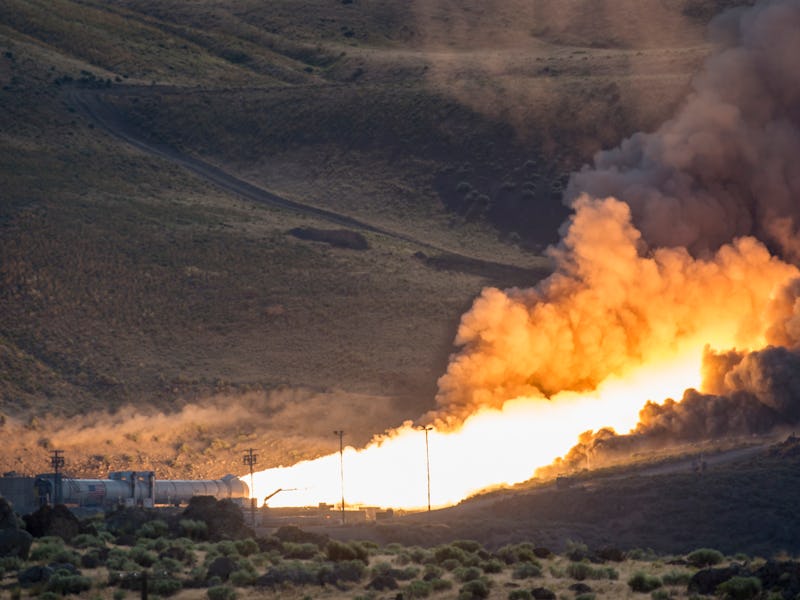Watch NASA Test the Rocket Booster That Will Be Used in Mars Missions
The fire from the booster was so hot it turned the nearby sand to glass.

NASA just conducted its second full-scale qualification booster test for its Space Launch System (SLS) — the most powerful rocket in the world, the device that will be used in the Mars missions to go into deep space.
NASA broadcast the event from Orbital ATK Propulsion Systems’ test facilities in Promontory, Utah on NASA TV as well as Facebook Live. This test was the final one before SLS completes its first test flight with NASA’s Orion spacecraft, the Exploration Mission-1 (EM-1), in late 2018, and as such was a major milestone on the journey to Mars.
Initially scheduled for 10:05 a.m. Eastern, the test was pushed back an hour while engineers worked out some bugs with the ground computer sequencer (which are unrelated to the actual flight systems). Hundreds of excited civilians, some of whom traveled across state lines to witness the test, waved and cheered as the booster fired; there was so many the event required an overflow parking lot.
They were kept safely corralled about a mile and a half from the engine itself, which issued massive clouds of fire and smoke, somewhat reminiscent of a volcano, during the course of the test. Even the ground control team three miles away reported being able to feel the shockwaves. The motor burned through five and a half tons of propellant every second of the two-minute test.
The test had more than 80 official objectives, but among them was the desire to see how the booster performed in different temperature extremes. This was a cold-motor test — they’d spent the last several weeks cooling it with what essentially amounts to a giant air conditioner. If it was too warm, the reaction would happen faster, creating more pressure and not burning for as long. Even so, the temperature inside the motor during the test was around 6,000 degrees — hot enough to boil steel, and to turn some of the sand in the immediate vicinity into glass.
Though sometimes referred to interchangeably, the solid rocket booster and the solid rocket motor aren’t the same thing — rather, the booster contains the forward structure above the motor, and then aft functions below the motor.
Now that the test is complete, engineers will begin almost immediately to dissect it, so they can analyze it in the exact condition it was left in after the test.